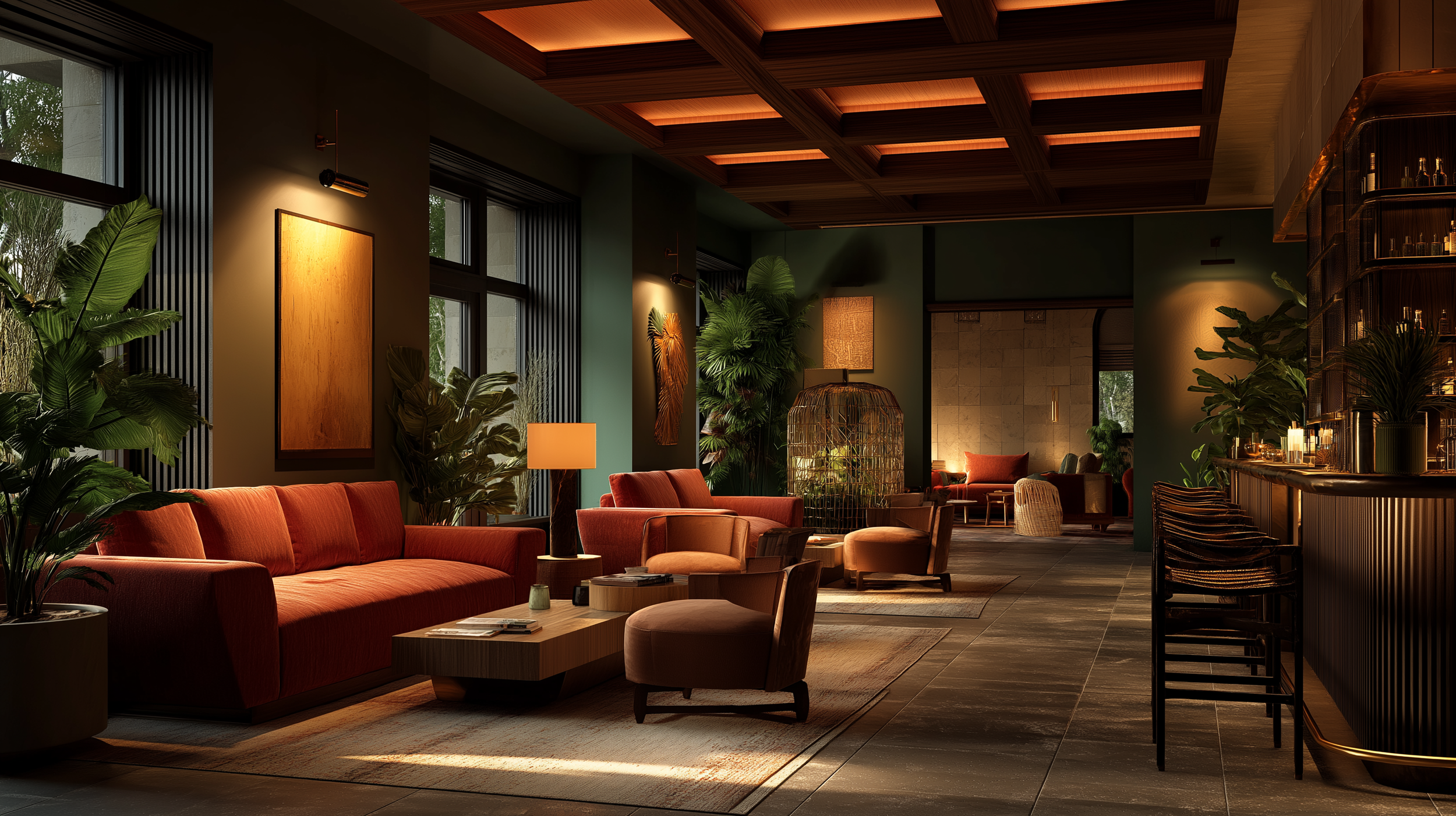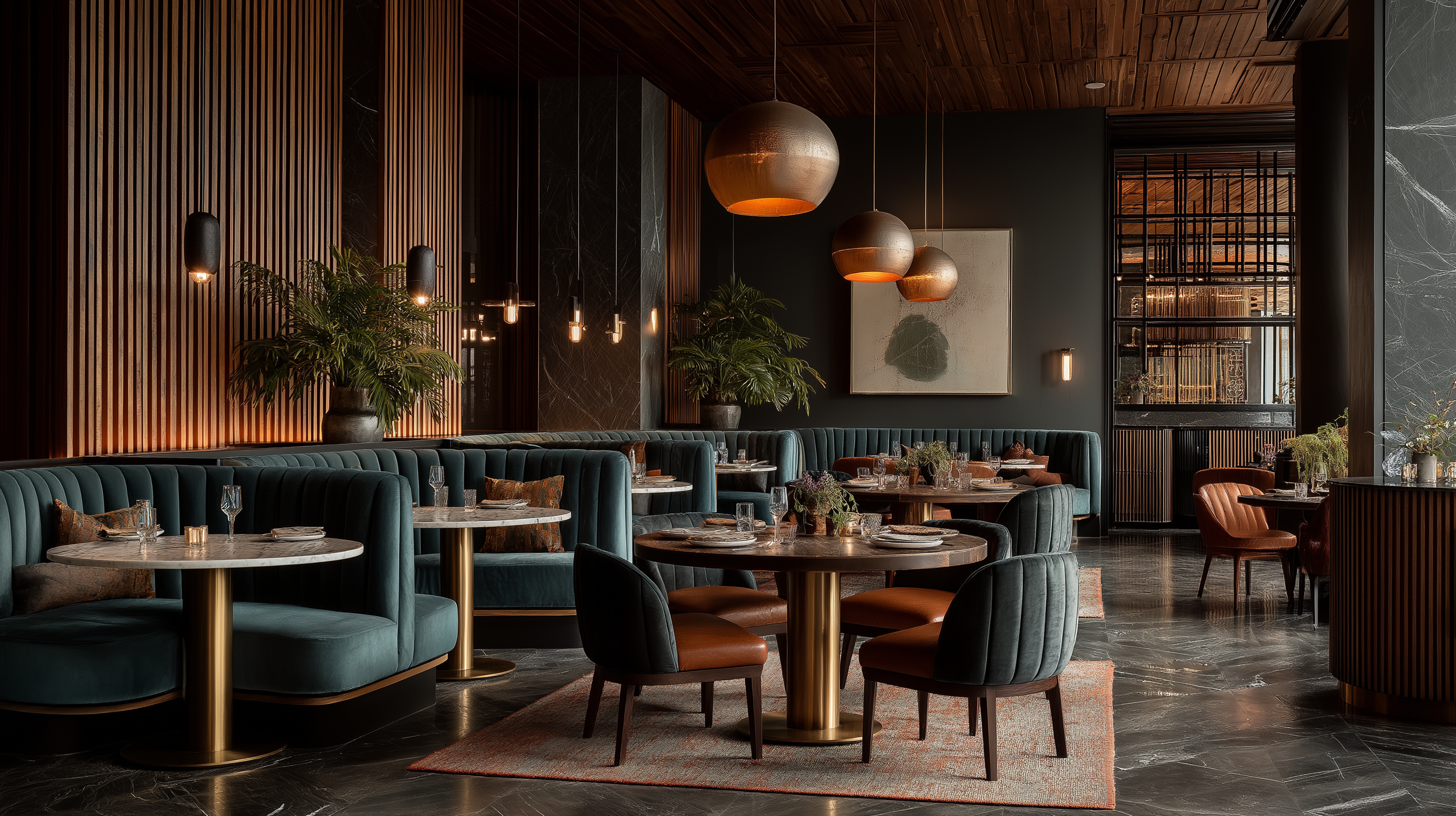Sensory Design in Commercial Interiors:
How Lighting, Textures & Sound Elevate the Guest Experience
Design isn’t just visual—it’s sensory. The most memorable spaces don’t just look stunning; they feel immersive. From lighting and textures to sound and scent, sensory design engages people on multiple levels, creating emotional and behavioral responses that translate into loyalty, dwell time, and higher spending.
Why Sensory Design Matters
Hospitality and retail environments rely on more than décor—they deliver experiences. According to research, dining venues rated neutral or unfavorable acoustics as the top source of dissatisfaction—even above price or crowding (studies show up to 24% report noise as most disruptive). Meanwhile, visual elements such as color and lighting shape initial impressions, but when combined with tactile and olfactory cues, they form powerful memory anchors.
Engaging multiple senses can boost emotional connection and perceived value. Experts note that design activating sight, touch, smell, and sound performs better at driving guest satisfaction and social sharing.
Lighting & Ambiance
Key Sensory Dimensions & Design Strategies
Lighting & Visual Ambience
Lighting isn’t decoration—it directs perception. Color temperature influences perceived warmth, spatial size, and mood. Research shows cool lighting can make spaces feel more alert, while warmer tones support relaxation and dining experiences. Layered lighting—ambient, accent, task—adds depth and flexibility.
Textures & Touch
Materiality matters. Soft textiles, tactile surfaces, and textural contrasts—from velvet to stone—create visual richness and invite engagement. Spaces with thoughtfully selected textures evoke comfort, luxury, and emotion, strengthening the guest connection.
Sound & Acoustic Quality
Soundscapes impact satisfaction and behavior. A study across 12 restaurants found that sound pressure level and reverberation time directly influence perceived soundscape pleasantness—and that pleasantness strongly predicts overall satisfaction. Excessive noise was cited as a top annoyance (24% of diners), causing shorter visits and fewer return visits. Music tempo and background sound also affect spending: upbeat dials revenue, relaxing tones increase dwell time.
Scent & Olfactory Cues
Olfactory elements hold surprising power. Thoughtful use of scent—like botanical aromas, fresh citrus, or signature fragrances—can evoke memory, mood, and brand identity. In hospitality and retail, scenting is often linked to higher dwell time and recall; it’s an underutilized but vital touchpoint.
Textural Materiality & Sensory Engagement
Designing a Servicescape That Works
The concept of the servicescape—the total built environment of a service setting—offers a framework for integrating sensory design intentionally. These elements include ambient conditions (lighting, temperature, sound), spatial layout, and style cues that evoke desired responses. The goal: design spaces that feel cohesive, welcoming, and memorable.
Practical Sensory Design Tips:
Use circadian lighting—or max 3000k lighting that is dimmable to manually imitate the circadian lighting rhythm—to align with guest rhythms and shift ambiance throughout the day.
Balance acoustics with sound-absorbing materials, zoned music, and proactive guest service for noisy situations.
Layer textures—like wood, brass, velvet, stone—to engage both sight and touch.
Scent strategically—coffee aromas in cafes, herbaceous notes in restaurants, tranquil lavender in wellness areas.
Why It Matters for your Business
When sensory design is done right, the results are measurable:
Improved guest satisfaction and dwell time
Increased spend per visit
Stronger brand recall/connection and more social media engagement
High-performing hospitality environments harness sensory cues to create emotional resonance, turning visitors into repeat customers and advocates.
We design emotional, intentional spaces that engage sight, sound, touch, and scent to elevate experience and loyalty.
Acoustic & Sense Responsive Wellness Space
Sources
Acoustical field study on restaurant sound and satisfaction (https://d-nb.info/1217416005/34, https://www.researchgate.net/publication/337146674)
Spatial multisensory design research (https://www.mdpi.com/2075-5309/15/8/1393, https://en.wikipedia.org/wiki/Sensory_design)
Sensory marketing and hospitality guide (https://medium.com/@faria.faria9/the-impact-of-sensory-design-on-user-engagement-and-satisfaction-fdf203409701, https://www.numberanalytics.com/blog/ultimate-guide-sensory-design-hospitality)
Servicescape environmental psychology model (https://en.wikipedia.org/wiki/Servicescape)




